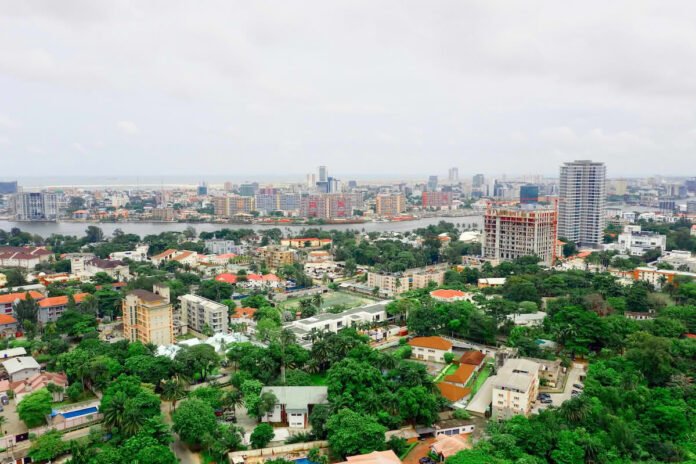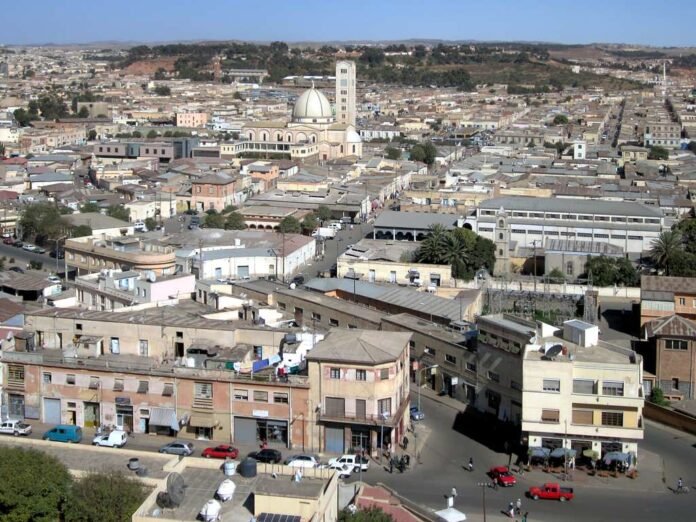Health insurance in Nigeria is broadly categorized into public and private systems, each playing a distinct role in the nation’s effort toward achieving Universal Health Coverage (UHC). While both aim to improve access to healthcare, they differ in structure, funding mechanisms, target populations, and service delivery.
Differences
One of the primary distinctions lies in funding sources and structure. Public health insurance, predominantly managed by the National Health Insurance Authority (NHIA), is largely funded through government allocations, including the Basic Healthcare Provision Fund (BHCPF), and state government contributions. It targets the broader population, especially vulnerable groups such as pregnant women, children, the elderly, and those in the informal sector. In contrast, private health insurance, offered by Health Maintenance Organizations (HMOs) like Hygeia, AIICO, and Leadway Health, operates on a premium-based model. These are often employer-sponsored or purchased individually, with clients typically from the formal sector and urban areas.
Another key difference is in service delivery and access points. Public insurance schemes often rely on government hospitals and primary health centers, which are sometimes underfunded and face issues like staff shortages and poor infrastructure. Meanwhile, private insurance clients generally have access to better-equipped private hospitals and clinics, with faster service, broader treatment options, and enhanced customer experience.
Operational efficiency also varies significantly. Private HMOs are usually more responsive and efficient in claims processing, customer service, and use of digital health technologies. Public schemes, though improving, often struggle with bureaucracy, inconsistent funding, and enforcement challenges. For instance, despite growing enrollment under NHIA—now covering about 19.4 million Nigerians—coverage remains below 10% of the population, reflecting low penetration compared to the need.
Similarities
Despite these differences, both systems share common goals. The overarching objective for both public and private insurance is to reduce out-of-pocket health spending and increase access to quality care. In fact, Nigeria’s health sector is moving toward integrating both systems, especially as the private sector currently provides over 60% of healthcare services in the country.
Both also support preventive care initiatives. NHIA, through programs like the Maternal Mortality Reduction Initiative (MAMII), and private insurers like Health Partners Limited, with their wellness programs, emphasize preventive health to curb long-term costs and improve population health outcomes.
Additionally, both public and private insurers are increasingly turning to digital health platforms to streamline services, expand reach, and improve monitoring. There is also a growing collaborative effort between the two sectors, especially under state-level schemes and in supporting the informal sector’s inclusion.
Top Public Health Insurance Schemes in Nigeria: Access, Coverage, and Consumer Experience
Nigeria’s healthcare system has seen steady improvements in public health insurance coverage, primarily through government-initiated schemes aimed at enhancing access and affordability for citizens. Although private health insurance is also available, this section focuses exclusively on public health insurance schemes in Nigeria. While the landscape is still evolving, there are currently three main public health insurance schemes that play a significant role in expanding healthcare access for Nigerians.
1. National Health Insurance Authority (NHIA) – Formerly NHIS(Official website: https://www.nhia.gov.ng)
- Cost: Contributions vary based on employment sector. For formal sector workers, the employer pays 10% and the employee contributes 5% of the basic salary.
- Available Services/Coverage Features: The NHIA covers a comprehensive list of services including outpatient care, maternal and child health services, surgeries, emergency care, diagnostic tests, and prescriptions. It has expanded to include coverage for chronic diseases like hypertension and diabetes.
- Open for All or Limited: Originally focused on federal government employees, the scheme has expanded to include the informal sector, retirees, and vulnerable populations through state-level adoption.
- Core Financial Features: Operates on a pooled risk basis. The funds collected are managed centrally and disbursed to Health Maintenance Organizations (HMOs) which then pay healthcare providers.
- Consumer Satisfaction Score: Moderate to High (varies by region). Urban centers generally report higher satisfaction due to better access to accredited facilities, while rural uptake is limited by infrastructure and provider availability.
2. State Social Health Insurance Schemes (SSHIS)
Several states have launched their own versions of social health insurance schemes, operating in partnership with the NHIA. Notable examples include Lagos State Health Scheme (LSHS) and Kwara State Health Insurance.
- Cost: Varies by state. In Lagos, individuals pay an average of ₦8,500 (~$11) annually for basic coverage.
- Available Services/Coverage Features: Coverage generally includes primary healthcare, some specialist care, maternal and child health services, and diagnostic services. Lagos State offers tiered packages depending on payment level.
- Open for All or Limited: These schemes are open to all state residents but enrollment is often stronger among the formal sector. Many states also offer subsidies for vulnerable groups.
- Core Financial Features: Funded through state budget allocations, individual contributions, and donor support. Some states receive matching funds from the federal government.
- Consumer Satisfaction Score: Moderate. Urban and semi-urban enrollees report better access, but satisfaction is affected by administrative delays and facility limitations in rural areas.
3. Tertiary Institutions Social Health Insurance Programme (TISHIP)
- Cost: Typically included in student fees, ranging between ₦1,000 and ₦2,000 (~$1.30 – $2.60) per academic session.
- Available Services/Coverage Features: TISHIP offers students access to outpatient care, emergency services, basic lab tests, and a limited range of specialist services.
- Open for All or Limited: Available only to students of Nigerian tertiary institutions (universities, polytechnics, colleges).
- Core Financial Features: Funded via mandatory student contributions and managed by campus health centers with oversight from NHIA.
- Consumer Satisfaction Score: Mixed. While some institutions report high utilization and satisfaction, others face criticism for poor service delivery and long wait times.
Leading Private Health Insurance Providers in Nigeria: Costs, Coverage, and Consumer Experience
In Nigeria’s healthcare landscape, private health insurance plays a significant role, particularly in urban areas and among the middle-to-upper income demographic. These plans are typically offered by Health Maintenance Organizations (HMOs) licensed by the National Health Insurance Authority (NHIA). While not as widespread as public schemes in rural regions, private insurance provides more flexible, prompt, and comprehensive healthcare access for those who can afford it. Here are five leading private health insurance providers in Nigeria, assessed by cost, coverage, accessibility, financial model, and customer satisfaction.
1. Hygeia HMO(Official website: https://www.hygeiahmo.com)
- Cost: Plans start at around ₦20,000 ($26) annually for basic individual coverage and can exceed ₦250,000 ($325) for premium family plans.
- Available Services/Coverage Features: Offers a wide range of healthcare services including outpatient and inpatient care, diagnostics, specialist consultations, maternal care, dental and optical services. Premium plans include access to private hospitals and international referrals.
- Open for All or Limited: Open to individuals, families, SMEs, and corporate clients.
- Core Financial Features: Prepaid risk-pooling model. Enrollees pay annual premiums, which are pooled and used to pay contracted providers on a capitation and fee-for-service basis.
- Consumer Satisfaction Score: High. Customers rate Hygeia positively for hospital network coverage and responsiveness, although some report occasional delays in authorizations.
2. AXA Mansard Health Insurance(Official website: https://www.axamansard.com/health)
- Cost: Starts from ₦30,000 ($39) per year for individuals. Family and corporate packages go up to ₦500,000+ ($650), depending on coverage and facility access.
- Available Services/Coverage Features: Offers basic to luxury care, including emergency services, surgeries, dental and optical care, chronic illness management, and even wellness programs. Premium plans cover overseas treatment.
- Open for All or Limited: Open to individuals, families, and organizations.
- Core Financial Features: Operates a flexible subscription and claims-based reimbursement model with digital tools for customer convenience.
- Consumer Satisfaction Score: High. AXA Mansard is well-reviewed for digital customer service tools, wide hospital network, and quick claims resolution.
3. Leadway Health
- Cost: Entry-level plans start at around ₦15,000 (~$20) per annum. More comprehensive plans are priced higher, depending on benefits and access levels.
- Available Services/Coverage Features: Includes outpatient and inpatient care, diagnostic services, surgeries, specialist consultations, and maternal care. Wellness and preventive health features are included in select plans.
- Open for All or Limited: Open to individuals, families, and businesses.
- Core Financial Features: Risk-pooling with optional add-ons and modular plans. Subscribers can choose plans that match income and desired service levels.
- Consumer Satisfaction Score: Moderate to High. Leadway is gaining traction for affordability and transparency, though some users note limited hospital access in rural areas.
4. Reliance HMO(Official website: https://www.reliancehmo.com)
- Cost: Monthly plans start as low as ₦3,500 ($4.50), with annual plans ranging from ₦40,000 to ₦250,000 ($52–$325), depending on the coverage level.
- Available Services/Coverage Features: Digital-first HMO offering outpatient, inpatient, surgeries, drugs, maternity, and diagnostics. Offers mobile app-based onboarding and care management.
- Open for All or Limited: Open to individuals, families, and companies. Particularly attractive to startups and tech workers.
- Core Financial Features: Digital subscriptions and wallet-based prepayments. Strong use of data for usage-based recommendations.
- Consumer Satisfaction Score: High. Praised for tech-driven interface, transparent pricing, and responsive customer care, though some users desire broader hospital networks.
5. Avon HMO(Official website: https://www.avonhealthcare.com)
- Cost: Basic individual plans begin at ₦19,000 ($25) annually, with family and business plans reaching ₦300,000+ ($390) depending on benefits.
- Available Services/Coverage Features: Comprehensive healthcare services including emergency care, preventive screenings, surgeries, maternity, and chronic condition management. Offers tailored SME plans and wellness services.
- Open for All or Limited: Open to the general public and corporate clients.
- Core Financial Features: Premium-based financing model with flexible options and telemedicine support for remote consultations.
- Consumer Satisfaction Score: Moderate to High. Noted for robust service and customer care, though some consumers report provider delays during peak periods.
READ MORE: Private and public health insurance of Armenia (Make informed choices)


